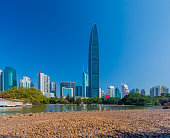Wine Tasting
페이지 정보
작성자 Fletcher 작성일 25-01-16 08:31 조회 54 댓글 0본문
Wine Tasting
Do you eat throughout a wine tasting?
During a wine tasting, the question of whether or not to eat can vary relying on the sort of tasting and personal preferences. Here are some concerns:
Reasons to Consider Eating
- Palate Cleansing: Having meals might help cleanse your palate between tastings, allowing you to higher respect the distinct flavors in each wine.
- Balancing Alcohol: Consuming meals may help absorb the alcohol, making the experience more gratifying and less overwhelming.
- Enhancing Flavors: Certain meals can complement and enhance the flavors of the wines being tasted, leading to a extra engaging experience.
Types of Foods to Pair
- Cheese: A traditional pairing that may deliver out the nuances in pink and white wines.
- Charcuterie: Meats can add depth and complexity to your tasting expertise.
- Fresh Fruits: Fruits like grapes, apples, or berries can serve as a refreshing palate cleanser.
In summary, while it isn't mandatory to eat during a wine tasting, it could possibly improve the general experience. Whether you choose to snack frivolously or take pleasure in a full meal, the key is to search out what works finest for you.
What are the processing steps of wine?
The processing steps of wine involve several key stages that remodel grapes into the ultimate product. Here is an summary of these steps:
1. Harvesting: Grapes are picked from the winery at their optimal ripeness. This may be carried out by hand or using mechanical harvesters.
2. Crushing: The harvested grapes are crushed to release their juice. This may be done utilizing conventional methods or trendy equipment.
3. Fermentation: The juice is transferred to fermentation vessels, Budal the place yeast is added. This yeast converts the sugars in the grape juice into alcohol and carbon dioxide. Fermentation can final from a number of days to several weeks.
4. Clarification: After fermentation, the wine is clarified to remove any solids and sediment. This could be achieved by way of pure settling, filtration, or centrifugation.
5. Aging: The clarified wine is aged in numerous containers, similar to stainless steel tanks or oak barrels. Aging allows the wine to develop extra complex flavors and aromas over time.
6. Bottling: Once the desired characteristics are achieved, the wine is bottled. This process typically contains additional filtration and the addition of sulfur dioxide to protect the wine's high quality.
7. Labeling: Finally, bottles are labeled, providing necessary details about the wine, including the sort, origin, and classic.
Each step within the processing of wine plays a vital role in shaping the ultimate product, contributing to its distinctive taste, aroma, and total character.
What are the steps of wine tasting?
Wine tasting is a sensory experience that includes a number of steps to completely appreciate the wine's traits. Here are the key steps to observe:
1. Observe
Start by inspecting the wine's appearance. Hold the glass against a white background to look at its color and readability. Look for particulars similar to:
- Color: Note the hue, intensity, and any variations.
- Clarity: Check if it is clear or has sediments.
2. Swirl
Gently swirl the wine in your glass. This motion releases the wine's aromas. Swirling will increase the surface space and helps to oxygenate the wine.
3. Smell
Bring the glass to your nostril and take a deep inhale. Identify the various aromas that you could detect. You may find:
- Fruity scents: Such as berries, citrus, or stone fruits.
- Floral notes: Like rose or jasmine.
- Earthy undertones: Such as minerality or spices.
4. Taste
Take a small sip and let it roll over your palate. Consider the following attributes:
- Sweetness: Is the wine dry, off-dry, or sweet?
- Acidity: Does it have a refreshing tartness?
- Tannins: Are they delicate or astringent?
- Body: Is the wine mild, medium, or full-bodied?
5. Finish
Observe the aftertaste after swallowing the wine. Consider how long the flavors linger and whether they are nice. A long, expressive finish is often a sign of a high-quality wine.

6. Reflect
Finally, take a second to mirror on your total experience. Consider how the wine's look, aroma, taste, and finish combine to create your impression. You may need to jot down your thoughts or ratings for future reference.
Following these steps will improve your wine tasting experience and deepen your appreciation for different wines.
댓글목록 0
등록된 댓글이 없습니다.
